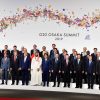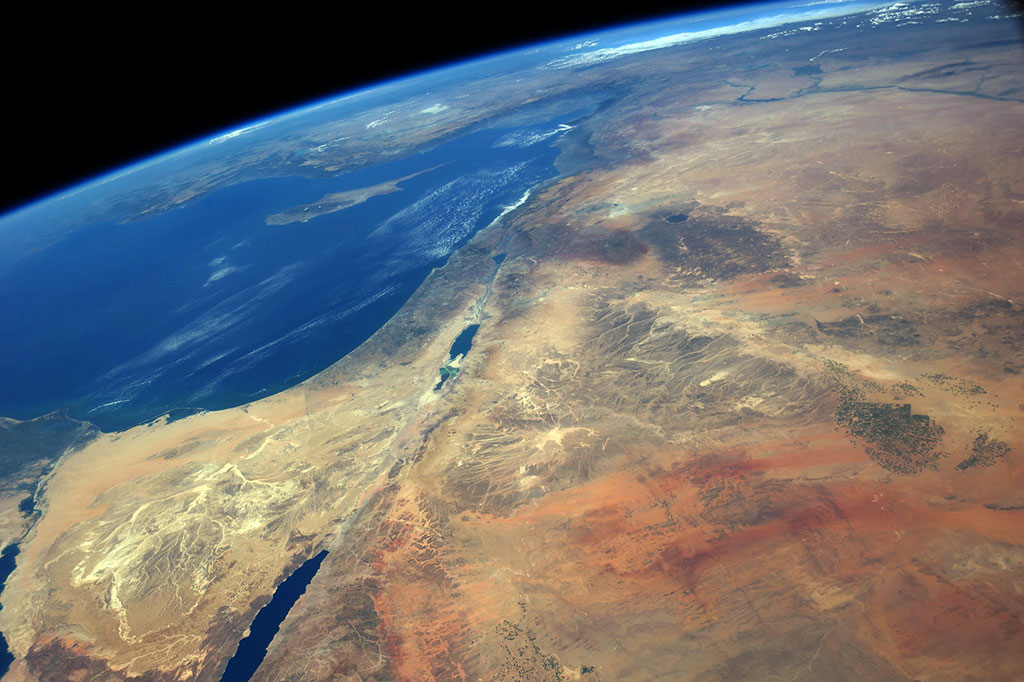
The Elcano Global Presence Index includes all countries of the Middle East, with the exception of Bahrein and Palestine. Affected by a variety of conflicts, such as those of Syria and Yemen, the region ranks 5th and has the lowest growth since 1990 after Latin America. Two major poles of concentration of presence can be identified: the UAE and Saudi Arabia competing for 1st place, and Iran and Israel for 3rd.

Energy driving external projection (1)
- Energy exports (20%) and migrations (10%) stand out in the Middle East’s global presence profile.
- The commodities-cycle boom and busts affect the region’s share of global presence.[1]

- Energy has triggered other drivers, such as services and investment.[2]
- Recently, aggregate growth was driven by the military dimension due to regional conflicts: Syria (2011) and Yemen (2014).
- With the exception of migration (also linked to conflicts) and, lately, information, the soft variables have been modest drivers of external projection.
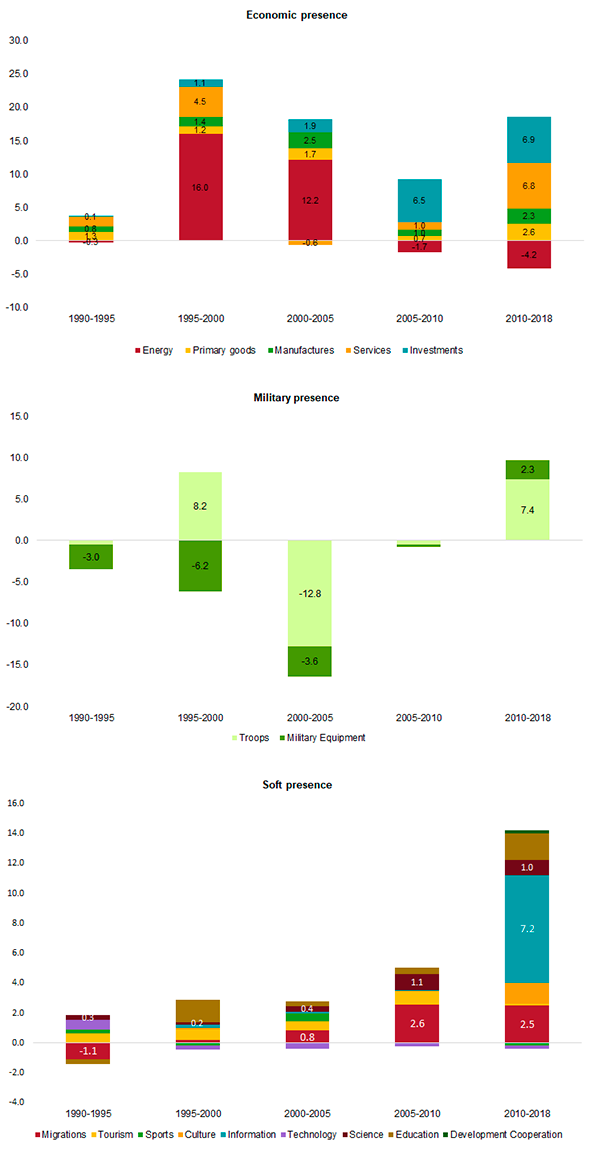
United Arab Emirates vs. Saudi Arabia
- The United Arab Emirates (UAE) record the highest growth, pushing aside Saudi Arabia.
- The UAE has a more economic and diversified profile than Saudi Arabia.
- Saudi Arabia’s economic presence is more focused on energy exports and the country has a softer (migrations) and more military (equipment) external presence profile.
- Lebanon, Qatar, Oman and Israel also gain positions. Other countries have been hard hit by conflicts (Syria, Yemen and Iraq).
Ranking of the countries in the region (variation 1990 – 2018)
| World ranking position | Var. 1990-2018 | |
|---|---|---|
| United Arab Emirates (UAE) | 20 | +43 |
| Saudi Arabia | 21 | -1 |
| Iran | 34 | -8 |
| Israel | 35 | +2 |
| Qatar | 53 | +16 |
| Kuwait | 59 | -4 |
| Iraq | 66 | -20 |
| Oman | 67 | +6 |
| Lebanon | 69 | +25 |
| Jordan | 74 | -9 |
| Syria | 113 | -74 |
| Yemen | 119 | -21 |
Source: Elcano Global Presence Index, Elcano Royal Institute
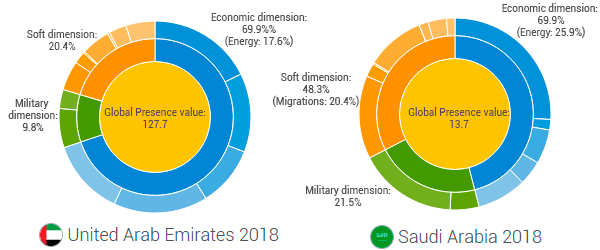
Silent Middle East leaders
- Qatar’s profile is mostly economic: energy and investment.
- Lebanon is an outlier, with a softer presence –migrations and culture– and an economic insertion focused on services.
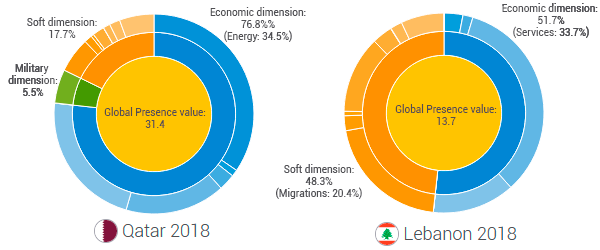
[1] The share or quota of presence represents the weight of a country’s presence record –global or by dimensions– over the added record of all countries.
[2] This driver value shows the real contribution of each variable to global presence growth, calculated by multiplying the growth of each individual variable by its weight over the total global presence in the previous year.


